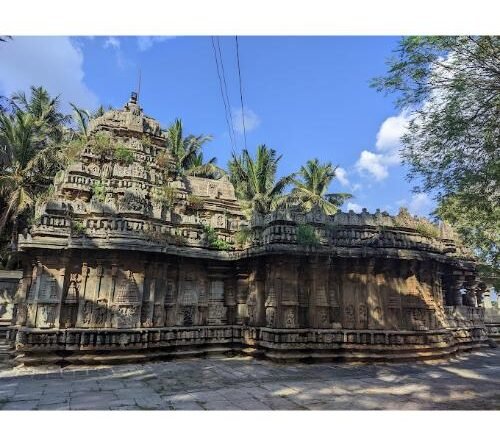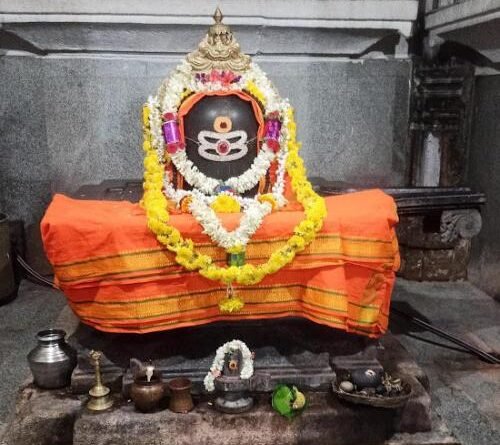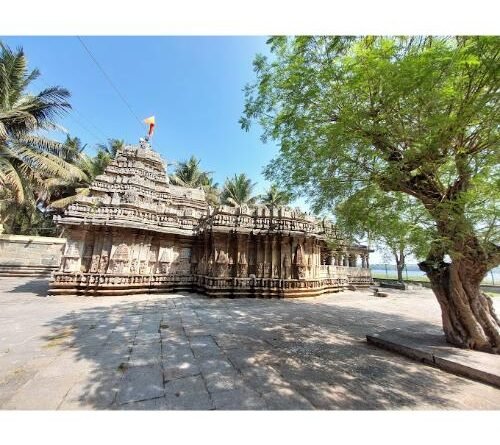Ancient Hoysala Shri Brahmeshwara Temple kikkeri,Mandya,Karnataka
The Brahmeshvara temple, also referred to as the Brahmeshwara or Brahmesvara temple, is a 12th-century Hindu temple with Hoysala architecture in Kikkeri village, Mandya district of Karnataka state, India. Along with two other major historic temples within the village, the Brahmeshvara temple is one of many major ruined temples with notable artwork in Kikkeri area close to the more famous monuments of Shravanabelagola.
Dedicated to Shiva, the temple is notable for its integration of all major traditions of Hinduism – Shaivism, Vaishnavism and Shaktism, along with Vedic deities. The east facing temple has several innovations in the Karnata-tradition of Hindu architecture, such as an ingenious mesa-makara-pattika, the bulging Navaranga mandapa, the sophisticated details in many statues and the classical Indian dance postures as sculpted inside the mandapa. On its outer walls are aedicules illustrating Hindu temple architecture from different parts of India – Nagara (north, west, east), Dravida (south), Vesara (Deccan), Bhumija (central, east) and composite forms. The carvings, state Dhaky and Meister, are of elaborate and high quality.
It was completed in 1171 AD by a woman named Bammave Nayakiti during the rule of Hoysala King Narasimha I. A significant portion of the artwork inside and outside temple is defaced, show signs of deliberate mutilation. Near the main temple, within the same complex is a Devi shrine with notable pilaster artwork. The Devi shrine was likely built a few decades later.
This temple is managed and protected by the Archaeology, Museums and Heritage department of the state of Karnataka (monument S-KA-543).
History
The authentic early history of Kikkeri before the 11th century is unknown. A local oral tradition states that there once lived a tribal chief named Keeka, whose tribe was a source of complaints to the king by people of the Shravanabelagola region. He was arrested. When presented before the king, Keeka offered the king “vast treasures” in exchange for a village named after him, with a temple, water tank and a fort where they can all settle down. The king accepted his terms, and the village built came to be known as Kikkeri every since. The temple Keeka asked for was the Malleswara temple, completed in late 11th to early 12th century. This was dedicated to Brahmesvara (Shiva). Over time, the foundations of the Malleswara temple became constantly water logged. So, in the 12th century a woman named Bammave Nayakiti built the more spectacular Brahmesvara temple, where the deity was re-consecrated. A number of inscriptions have been discovered in this village and at the temples, but none authenticate this story. However, these inscriptions confirm that the Malleswara temple with a 16-pillar mandapa and a closed hall is the oldest temple in Kikkeri, and that it has been water logged.
Inscriptions in the 11th century (saka 1017) mention gifts to Brahmesvara in Kikkeri by Hoysala kings who proclaim themselves to be from Yadava-kula and ruling over Ganga-mandala.
The existence of several major historic temples in Kikkeri suggests it was an important prosperous town in pre-14th century Karnataka. This is further corroborated by many more major, intricately carved historic Hindu and Jain temples found within about 15 kilometers of Kikkeri, as well as the numerous inscriptions discovered in this region. Example pre-14th century temples and monuments include those found in Shravanabelagola, Govindanhalli, Hosaholalu and Sasalu.
















